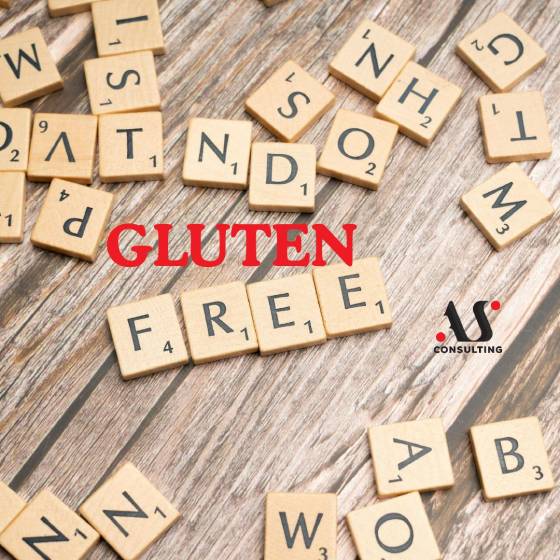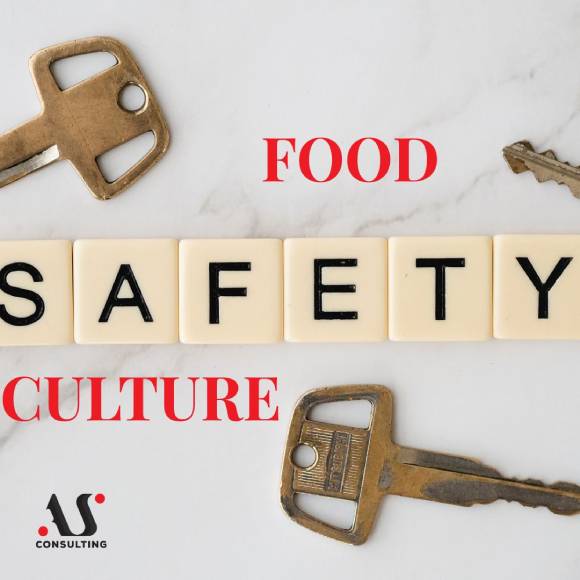
REVIEW OF GFSI RECOGNIZED STANDARDS
August 1, 2022
HACCP according to the 2020 Code of Practice
September 15, 2022Often, when creating a risk analysis, the question arises as to which group of hazards allergens should be classified into. To make it clear, let’s start from the definition of allergens themselves.
According to the IFS dictionary (Annex 12 Glossary, IFS Food standard ver 7) an allergen is: “Food causing an adverse reaction that is mediated by an immunological response. “
Not so clear yet, is it?
Let’s start from the term “allergen” itself. Allergens are substances that cause a chemical reaction in the organism, and according to their chemical composition, they are usually proteins, but also polysaccharides (sugars), lipoids (fat-like substances), as well as inorganic substances. From this sentence follows the answer to the question in which type of hazards we can classify allergens: allergens belong to the chemical type of hazards.
Allergens can be divided into: nutritional (allergens from food) and inhalation (allergens in the air – pollen from different types of trees (poplar, birch, willow, hazel), grass and weeds, mites, dust, hair and feathers of domestic animals and pets. Both types cause allergies (allergic reactions).
What are allergies? An allergy is an overreaction of the immune system, which occurs when the organism recognizes an otherwise harmless substance (the so-called allergen) as harmful.
What are allergic reactions? In the case of nutritional allergens, reactions can be in the form of rashes, eczema and redness on the skin, swelling of the skin, stomach pain, diarrhea, nausea and vomiting. If it is an inhalant allergen, the symptoms can be an upper respiratory tract infection, accompanied by a runny nose, long-lasting irritating cough, itchy eyes, exhaustion and fatigue, dry skin that cracks and itches.
When it comes to allergic reactions caused by food, we often confuse the terms: allergy and intolerance.
Allergy is a reaction of the immune system, when the body recognizes an otherwise harmless substance as harmful; the immune system reacts intensively in order to protect the body from these otherwise harmless substances, by starting to create a large amount of antibodies (IgE).
What is a food intolerance?
Food intolerance is a non-immunological reaction to food, when the intake of certain foods from the daily diet causes discomfort and symptoms every time after the intake of that food in the body and can lead to inflammatory processes in the body.
We should also mention special types of sensitivity caused by gluten, namely celiac disease (recognized as a genetic autoimmune imbalance caused by gluten consumption), as well as gluten intolerance (symptoms similar to celiac disease but less severe). Gluten and related standards will be the subject of one of the next articles…
Why is there so much talk about allergens?
It is estimated that currently around 20% of the world’s population suffers from some type of allergic reaction, while by 2050 it is expected that this figure will increase to (even!) 50% of the population.
What is the cause of this? Some of the reasons are: increased environmental pollution, weakened immunity, dominant consumption of industrial food full of additives and preservatives, as well as refined sugars.
Over 150 foods have been declared common allergens, and it is believed that almost all foods can cause allergies. However, according to EU legislation (Regulation (EU) N° 1169 / 2011 of the European Parliament and of the Council), the following foods are labeled as allergens (responsible for over 90% of allergic reactions):
- Cereals containing gluten (i.e. wheat, rye, barley, oats, spelt, kamut or their hybridised strains) and products thereof
- Crustaceans and products thereof
- Eggs and products thereof
- Fish and products thereof
- Peanuts and products thereof
- Soybeans and products thereof
- Milk and products thereof (including lactose)
- Nuts i.e. Almond (Amygdalus communis L.), Hazelnut
- (Corylus avellana), Walnut (Juglans regia), Cashew (Anacardium occidentale), Pecan nut (Carya illinoiesis (Wangenh.) K. Koch), Brazil nut(Bertholletia excelsa), Pistachio nut (Pistacia vera), Macadamia nut and Queensland nut (Macadamia ternifolia) and products thereof
- Celery and products thereof
- Lupin and products thereof
- Molluscs and products thereof
- Mustard and products thereof
- Sesame seeds and products thereof
- Sulphur dioxide and sulphites at concentrations of more than 10 mg / kg or 10 mg / liter expressed as SO2.
As company want to operate responsibly and provide adequate protection to its consumers related to the presence of allergens, a detailed analysis is necessary to identify existing as well as potential allergens (trace allergens).
It is clear that if one of the ingredients of a food product is one from “group 8”, then the product contains a specific allergen.
But what are trace allergens and why are they labeled as such?
Allergens in traces. If you have noticed the sentence: “may contain traces of…” on the labels of food products, and you show an allergic reaction to the specified type of allergen, you must definitely avoid that product. What are trace of allergens? We will try to explain with examples.
When the product does not contain an allergen ingredient (“group 8”), but it is present in the production process, there is a possibility of transferring traces of the allergen to a product that does not otherwise contain an allergenic ingredient. For example, a company produces a cake with eggs and a cake without eggs, but the same production line is used for both types, there is a possibility that traces of eggs can be transferred to a cake that does not contain eggs as an ingredient.
When there is no allergenic ingredient (“group 8”) in the product, but it is found in some of the raw materials, there is a possibility of transferring traces of the allergen to the product that otherwise does not contain the allergenic ingredient. For example, raisins are not allergens according to the EU regulation, but is treated with falling SO2, so there is a possibility of traces of SO2 (or even SO2 as an allergen!) in the finished product containing raisins.
There are a lot of examples, but how to protect yourself from allergens, especially if the customer demands that the product NOT CONTAIN ALLERGENS? The answer is to follow the rules for managing allergens.
ALLERGEN MANAGEMENT (View at GFSI recognized food standards)
In order for a company to effectively manage with allergens, the first step is an allergen risk assessment: a detailed assessment of allergen sources and traces of allergens in the company.
After the risk assessment, preventive measures should be implemented to prevent cross-contamination. Some of the measures can be: washing and/or disinfection, checking the effectiveness of washing using some of the test methods (e.g. swabs) for the presence of allergens, separation: timely and spatially, employee training and awareness improvement (e.g. wearing protective clothing during meals), packaging and labeling (presence of traces of allergens and/or allergens).
Often, the production technology is such that it is not possible to completely eliminate traces of allergens, and then the only measure is to label allergens in traces.
Why is there so much talk about allergen traces? Believe it or not, there are people hypersensitive to certain allergens, for whom even small amounts of allergens (traces) will cause serious allergic reactions. In order to protect the health of our consumers, it is necessary that the risk analysis is complete, in order to identify all potential sources of allergens.
In the case of the presence of allergens or traces of allergens that the company has not identified (therefore not marked), the GFSI recognized standards have a zero tolerance threshold and such cases lead to the impossibility of obtaining a certificate. Given that it is also a legal requirement, an inadequate assessment can lead to legal violations.
In order to carry out a complete hazard analysis related to allergens, highly trained employees are necessary. If you need training or help in creating an analysis, you can contact our Agency!!!!




